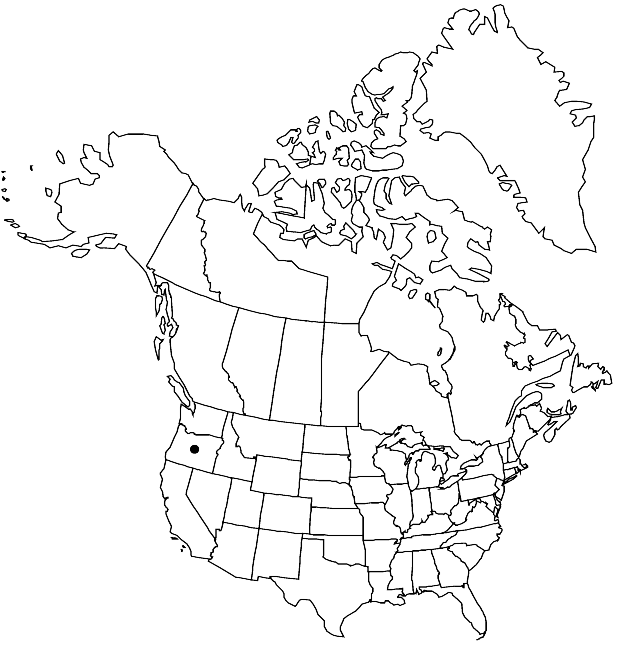Draba cusickii
in H. G. A. Engler, Pflanzenr. 89[IV,105]: 105. 1927.
Perennials; (loosely cespitose); caudex branched (with few, persistent leaf remains); scapose. Stems unbranched, 0.3–1.2 dm, pubescent throughout, trichomes (2–) 4-rayed, 0.05–0.5 (–0.6) mm. Basal leaves rosulate; shortly petiolate; petiole base ciliate (margin not ciliate, trichomes 2-rayed, 0.3–0.6 mm); blade oblanceolate to obovate, 0.4–1.2 cm × 2–5 mm, margins entire or, rarely, denticulate, surfaces pubescent with stalked, (2–) 4-rayed trichomes, 0.15–0.4 mm. Cauline leaves 0. Racemes 10–20 (–25) -flowered, ebracteate, considerably elongated in fruit; rachis not flexuous, pubescent as stems proximally. Fruiting pedicels divaricate-ascending, straight (not expanded basally), 4–9 mm, pubescent, trichomes (2–) 4-rayed, (0.05–0.25 mm). Flowers: sepals broadly ovate, 2–2.5 mm, pubescent, (trichomes short-stalked, 3-rayed or 4-rayed); petals yellow, obovate to oblanceolate, 3.7–6 × 1.5–2.5 mm; anthers ovate, 0.5–0.6 mm. Fruits lanceolate to broadly ovate, plane, flattened, 6–9 × 2–4.5 mm; valves pubescent, trichomes short-stalked, (2–) 4-rayed, 0.05–0.25 mm; ovules 10–18 per ovary; style 0.4 0.8 (–1) mm. Seeds oblong, 1.2–1.5 × 0.7–0.8 mm. 2n = 26.
Phenology: Flowering Jun–Jul.
Habitat: Basaltic outcrops, talus, rocky soil
Elevation: 2000-2700 m
Distribution

Oreg.
Discussion
Draba cusickii was divided by R. C. Rollins (1993) into two varieties with significantly different morphologies and chromosome numbers. The Nevada endemic var. pedicellata (2n = 20) is here treated as a distinct species following M. D. Windham (2004). Draba cusickii has the same chromosome number as D. sobolifera but is readily distinguished from that species by having 4-rayed (versus simple or 2-rayed) fruit trichomes. Draba cusickii is known from Steens Mountain (Harney County).
Selected References
None.
Lower Taxa
"elongated" is not a number."thick" is not a number."dm" is not declared as a valid unit of measurement for this property.